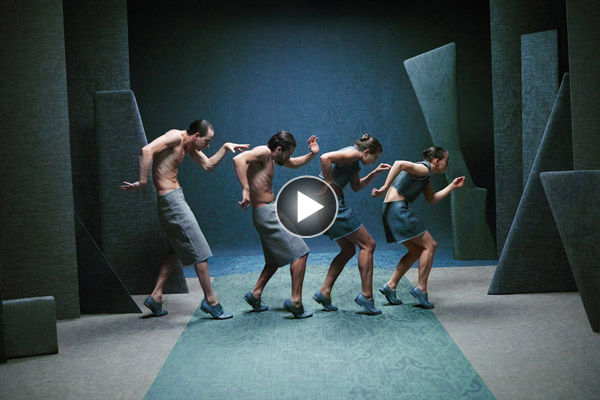As we work ever-more desperately towards a more sustainable future, the really smart people see the solutions as only partly technological. Many answers may lie in a simpler, less wasteful past.
June 6th, 2008
Well, maybe not so far in the past because, until fairly recently, Central Asian nomads took their homes with them. These pastoral nomads had their own stock, homes and transport and followed the seasons, having to endure the extremes of climate from freezing cold winters to searing summers.
Commonly referred to as a yurt, the Turkmen tent was a self-supporting, felt-covered trellis tent which could be collapsed and then carried on a camel’s back. Strictly-speaking, it should be called an oi (meaning the structure of the house), because yurt refers to the land on which the tent stands and, according to Ross Langlands from Sydney’s Nomadic Rug Traders, it “incorporates connotations of territory, birthplace and connection with the smallest unity of society, the family.”
The oi is a dome-shaped structure about five metres in diameter with a smoke hole at the top. With its earth floor and view of the sky up through the smoke hole, the oi was seen as a microcosm of the universe – the earth and the heavens brought together.
The oi could be erected in about an hour and was divided into four quadrants: the front two for domestic use and the rear two for sleeping and entertaining.
A number of elements made up the oi, the most important being the main carpet which would be laid out on special occasions. Other elements were the ensi (the tent door rug), the doorway surround (kapanuk), storage bags (jovals), smaller domestic bags (torbas, djollars) and the tent pole cover (ok bash). These and other woven items – weaving, including the weaving of tribal carpets, was done by the women – lined the inside walls of the tent and helped climate control, keeping the tent warm in winter and cool in summer.
In its own way, therefore, the oi exemplified the principle of the unity of form and function – one might even say it embodies the Vitruvian principles of commodity, firmness and delight. The oi is an ideal structure in that (in material terms) it uses no more or less than it needs, it fulfils all its functions in a simple and uncomplicated way, and is at the same time aesthetically pleasing with a perfect fusion of aesthetic delight and utility.
Dare we say, it is a model of sustainability? You can see for yourself next December when Nomadic Rug Traders, specialists in tribal artefacts from Central and South-East Asia, have their annual showing of their own yurt, erecting it in the gallery with a selection of artefacts typical of the Central Asian nomadic lifestyle.
Nomadic Rug Traders
(61 2) 9660 3753,
A searchable and comprehensive guide for specifying leading products and their suppliers
Keep up to date with the latest and greatest from our industry BFF's!

BLANCOCULINA-S II Sensor promotes water efficiency and reduces waste, representing a leap forward in faucet technology.

In this candid interview, the culinary mastermind behind Singapore’s Nouri and Appetite talks about food as an act of human connection that transcends borders and accolades, the crucial role of technology in preserving its unifying power, and finding a kindred spirit in Gaggenau’s reverence for tradition and relentless pursuit of innovation.

Elevate any space with statement lighting to illuminate and inspire.

Within the intimate confines of compact living, where space is at a premium, efficiency is critical and dining out often trumps home cooking, Gaggenau’s 400 Series Culinary Drawer proves that limited space can, in fact, unlock unlimited culinary possibilities.

Inspired by the calm, tranquil beauty of the forests, lakes and wide skies of their Swedish homeland, Bolon has launched their new collection, ‘Silence’ with a gripping short film by Alexander Ekman.

Cheshire Architects has forged a name for itself across New Zealand, Australia and abroad, with adventurous clientele who are keen to be taken on a journey.
The internet never sleeps! Here's the stuff you might have missed

Bradhly Le and his team talk us through the foundations of the newly launched practice, RIZEN Atelier.

With Woods Bagot as Lead Design & Delivery Architect for Western Sydney International Airport (WSI), Ian Lomas comments on the debate between speed and leisure in airports.